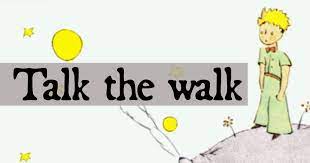Introduction
All of us are familiar with cartoons. One of the dictionaries defines a cartoon as “a simple drawing showing the features of its subjects in a humorously exaggerated way” (emphasis added). The subjects are either humans or animals in their own worlds, at least till recently. I have now begun to see many cartoons where the subjects are not any animals but specifically pets in their interaction among themselves or in relation to their owners. Most of them are very good and some are brilliant. This blogpost is about this genre of cartoons which I am calling “pet-toons” to distinguish them from their regular progenitors.
The World of Pets
I feel that pet owners, as a class, do not care about what the pets may be thinking about their life and that of the owners or about their interaction. Owners tend to treat pets as toys – creatures to play with, cuddle, feed, take care, etc. This is not due to lack of interest but of imagination. Only an artist with his creative mind can step into the world of the pets and express what they may think or say to or among themselves. Such an artist must be a creative writer of some sort. I have not come across any writing, fiction or otherwise, that looks at this sub-set of the animal world with a touch of humour. However, I have seen a number of cartoonists post their work on social media. I share in this blogpost some of the best.
Dogs and Cats
Worldwide, dogs and cats are the most popular and beloved pets. They have differentiated, distinct characteristics that fall into six groups.
- Social Behaviour
Dogs are usually more social and form strong bonds with the families they are part of. They are loyal and eager to please their owners. Interaction with humans keep them stimulated. Cats are independent and do not seek constant attention. They do not also show their attachment to the owners openly.
2. Training
Dogs are very trainable and learn a wide range of commands and tricks eagerly and correctly. Cats can be trained about their litter box and that is about it.
- Exercise
Dogs thrive on regular physical activity such as walks and even exercise. Cats are lazy and consider playing with their toys to be adequate.
- Grooming
Dogs need regular grooming, including brushing to control shedding and maintain a healthy coat. Cats are essentially self-groomers who keep their fur clean and tidy on their own.
- Space
Though they adapt well, most dogs require expansive spaces to run around and play in. Cats do well even in apartments and indoor spaces.
- Affection
Dogs are affectionate and enjoy closeness and physical touch with the owners. They seek attention and bond easily. Cats can be affectionate too but are less demonstrative. Not all of them like cuddling.
These are generalisations and the behaviour of a particular dog or cat may not always to the generics portrayed here. The purpose of this elaborate differentiation is to show how well the traits of dogs and cats are captured in the cartoons. If these pets could communicate, what may they be telling their owners? What may they say to their own species or other animals? If they model their behaviour on that of the owners, how may that reveal itself? What if they take to technology and use paw-held devices? Would they have their own clubs or support groups?
Pet-toons in this blogpost come up with funny insights into the world of pets and answer some of the above questions. I have arranged them in four categories. You may discover, as I did at the end of my cut-and-paste job, that the cartoonists have made us think about the relations between pets and their owners – them and us – in completely new ways that can us all better human beings. If only we can imbibe some of their qualities! I salute all the cartoonists for making us think and learn through humour!
To view these pet-toons, please click here.
The Last Woofs and Meows
I have shared these pet-toons with the family on Signal and WhatsApp over many months now and they have enjoyed them. Yesterday, I thought that I may as well share them with others through a blog. Hence this ‘quickie’ with about 900 words and 56 pictures. Or 56,000 words as per the adage. I am sure that it is the longest blog that I will ever write. It took me about three days to finish the blog and post it. That is 21 dog days! That again is likely to be the longest turnaround but most pleasurable time I have taken over a blog!
We are a family of pet owners with two streeties – one rescue dog the family adopted and another stray that adopted us. Our son in the USA has a dog and two cats. He is convinced that I dislike cats. My nieces have dogs. The extended family too has many dog owners. I hope all of them – and pet owners among potential readers of this blogpost – will agree that I have been even-handed about both the pets even though I must confess that I cannot relate to cats. They are just too snooty for me!
Enjoy! Today happens to be our late father’s 105th birth anniversary. I hope he and my mother who was loved by all the pets her children and grandchildren chose to take care of see these pet-toons and have a good chuckle!
S. Krishna Kumar
29th July, 2023
Bengaluru
Blogpost # 74
